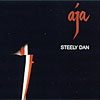Home » Jazz Articles » Live Review » The Mishras at Folklife
The Mishras at Folklife
As the raga became increasingly complex it also increased in tempo, and when it reached high, intense speeds father and son traded runs and took turns leading.
Northwest Folklife Festival
McCaw Hall
Seattle, WA
May 27, 2006
The music began with master sitarist Pandit Shivnath Mishra and his son, Deobrat Mishra, in a sitar duet. They played a traditional classical Indian raga that built slowly with father and son playing off of each other and taking cues. As the raga became increasingly complex it also increased in tempo, and when it reached high, intense speeds father and son traded runs and took turns leading. As the music crescendoed it then slowed, becoming nearly static, then suddenly took off at intense speed, gradually becoming slower, drawing their first raga to a close.
The next raga started with Marco Zonka playing tablas, moving slowly as tambura, played by Gina Sala, and sitars came in. The tempo was medium-slow as the sitars became increasingly complex. Deobrat played harder, bending and pinching the strings, bringing the music to a climax. The intensity of the music suddenly decreased as Shivnath picked up playing adventurous musical passages then was joined by his son. Shivnath then took over the lead playing with increasing intensity as the tablas increased in tempo. Deobrat joined in then took over the lead from his father, bringing the intensity to a higher level while he picked and bent the strings of his sitar harder and harder.
The tablas slowed in tempo as Deobrat continued playing, the musical background becoming nearly static. Then, with father complimenting and trading the lead with his son, speed and intensity picked up bringing the music to a thunderous climax. The music stopped then suddenly built back up again, this cycle repeating itself several times until, ultimately, it slowed in tempo and decreased in volume with the sitars maintaining complexity. The music then repeatedly built to crescendo with the tablas keeping time, climaxing again followed by a lull in intensity and Shivnath began to sing.
Shivnath sang while Deobrat complimented him with sitar, then Deobrat sang, father and son trading vocals with the power and grace of traditional Indian folklore, Deobrat finally singing with only the tablas playing. The sitars came back in at medium tempo, building gradually in complexity, increasing tempo with the tablas.
The music came to a crescendo with Shivnath playing beautiful passages, lyrical and vivid in tonal color, while being complimented by Deobrat. Father and son began strumming and picking fiercely, bringing the raga to a new level of intensity with a shift in Zonka's tabla rhythms. The music then gradually faded with tablas shifting to a faster tempo at a lower volume. Tablas and tambura layered upon each other moving into a stringed climax as Deobrat continued picking mightily with great speed but not great volume.
The music built again and Shivnath picked and strummed the strings of his sitar with ferociousness and increasing volume. The tablas picked up the tempo to bring the two sitarists into musical crescendo, then tablas and sitars traded call and response. Suddenly, the music took on intensity and speed building into its final crescendo to bring the raga into completion.
Personnel: Pandit Shivnath Mishra: sitar; Deobrat Mishra: sitar; Marco Zonka: tablas; Gina Sala: tambura.
Photo Credit
Jack Gold
Tags
PREVIOUS / NEXT
Support All About Jazz
 All About Jazz has been a pillar of jazz since 1995, championing it as an art form and, more importantly, supporting the musicians who make it. Our enduring commitment has made "AAJ" one of the most culturally important websites of its kind, read by hundreds of thousands of fans, musicians and industry figures every month.
All About Jazz has been a pillar of jazz since 1995, championing it as an art form and, more importantly, supporting the musicians who make it. Our enduring commitment has made "AAJ" one of the most culturally important websites of its kind, read by hundreds of thousands of fans, musicians and industry figures every month.




















